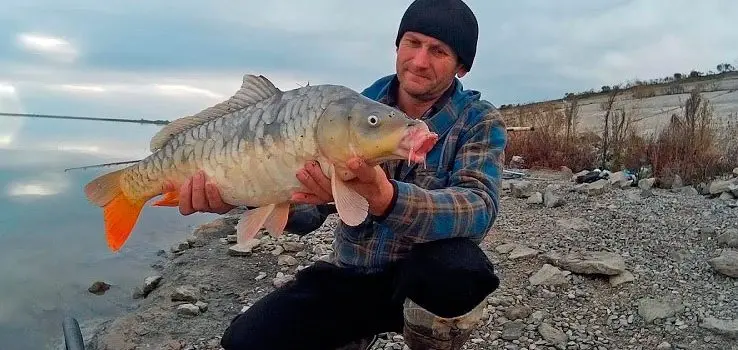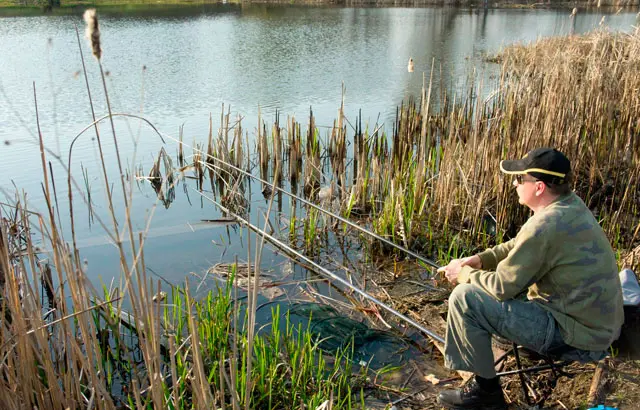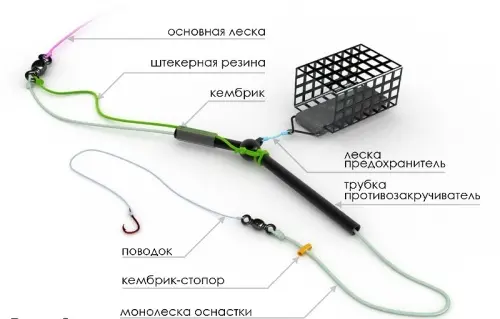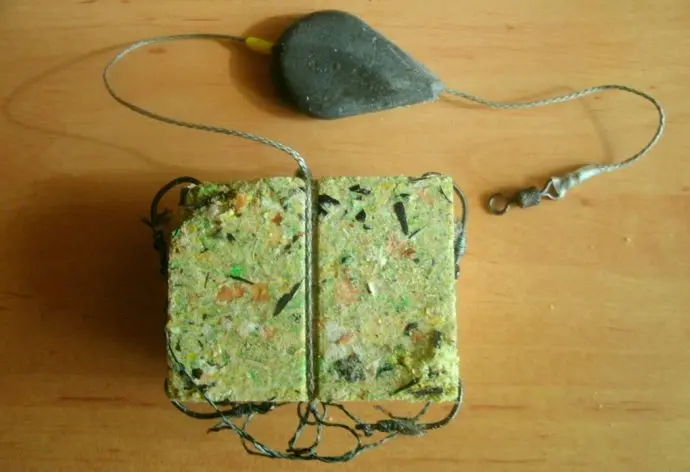Contents

Catching carp in the spring begins in different ways, depending on the region: in the southern regions it may be the month of March, and in the northern regions it may be the month of May. It all depends on the intensity of water heating, the nature of the reservoir and other factors.
Features of spring fishing for carp
Spring fishing for carp is an activity that requires a lot of patience, endurance and professionalism, as the fish is not active, it bites sluggishly, and it is not easy to catch it. As the water warms up, the activity of the carp begins to increase. The peak of activity falls on the period when the water warms up to +14ºС, then a good bite of carp is also observed. Usually, the water warms up intensively when the weather is warm outside for several days.
After a long stay of the fish in conditions of lack of oxygen, the carp is primarily engaged in saturating it, and only then, having felt a surge of strength and energy, it proceeds to the process of searching for food. On ponds where there is no current, and the lack of oxygen is felt more critically, the biting begins later, for about 3-4 weeks. If in winter you are engaged in punching holes for oxygen to enter the upper layers of the water, then the biting may begin a little earlier.
Choosing a promising place

In the spring, carp prefer to stay at depths where the sun’s rays penetrate, and this is no more than 2 meters. At the same time, on the river, carp chooses places where there is not a strong current and the water has time to warm up. Carp feeds only in warm water, so places where the water warms up will be promising, but deep places and places that are in the shade of large trees are unlikely to be of interest to carp.
Closer to summer (in the month of May), when the water has almost warmed up to the desired temperature, and it becomes more and more difficult to find feeding places for fish. The higher the temperature of the upper layers of water, the deeper the carp climbs. These may be pits in the area of the topnyak, where the bottom is covered with shells. As a rule, near such a place, there can be a lot of underwater vegetation, where carp sometimes feed on young shoots. Choosing a place between these objects, you can count on a successful hunt for carp.
Tackle selection
Since the carp prefers to stay closer to the surface in spring, it is better to catch it with an ordinary float rod equipped with a thin fishing line. The more sunlight, the more the water warms up and the activity of carp increases, therefore, anglers switch to catching carp on the feeder. The feeder is a bottom tackle, so during this period it is used little, especially in deep waters.

Feeder tackle is equipped with a feeder having a certain weight. After casting, the feeder with bait falls to the bottom, after which the bait begins to wash out of the feeder, forming a feeding spot. The design of the feeder is such that the baited hooks are hidden in the feeder. Once on the bottom, it falls into the field of view of the carp, and he begins to try the bait, sucking it into his mouth. Together with the food, he sucks in the baited hook. To lighten the weight of the hook, a foam ball is placed on it.
During this period, a crown can be quite effective tackle. It is a piece of pressed cake (makuha) attached to the main fishing line. Hooks with a nozzle are fixed on a cake bar, after which the cake sinks to the bottom. Under the action of water, the pressed cake gradually softens, and the fish begins to feed.

At the same time, she also swallows baited hooks (as in feeder fishing). The makoshnik is a very effective tackle, while it is very important that the pressed cake has the correct density. If the density is low, then the bar will quickly dissolve in water and there will be no positive effect, and if the density is high, then there will also be no effect, because the bar will dissolve in water for a very long time, and is unlikely to interest the fish. The optimal resorption time for a 50x50x50mm bar is about half an hour.
Bait and bait for carp
In the spring, you need to be very careful with bait, because the fish can get satiated very quickly and bites can not be seen. During this period, the main task is to bait the carp, but not to feed it. As the water warms up, the carp’s appetite grows, but before it spawns, it still won’t be able to eat a lot. Therefore, bait should be purely symbolic and low-calorie.
As for the attachment to the hook, in this case it is very important to know what the carp eats in this reservoir. It can eat both underwater vegetation and all kinds of mollusks, crustaceans, worms. Therefore, the nozzle on the hook must be appropriate: either of plant or animal origin.
In the spring, before spawning, you should not get carried away with boilies, especially large ones. It is better during this period to give preference to smaller balls. If the water has not yet warmed up, then you can use aromatic additives with the smell of garlic or ginger, and when the water is heated, sweet smells, like vanilla, will work well.
For bait, you can prepare a mixture of:
- chopped worms
- boiled cereals (barley, corn, peas)
- bloodworms
- cakes

In order not to overfeed the carp, the bait should contain more components of plant origin. Such a nozzle as a dragonfly larva is very catchy, but it is quite difficult to find it. If a carp delicacy is found, carp hunting will be remembered for a long time.
In the spring, you can catch a trophy specimen of carp, and even with caviar, useful and nutritious. At the same time, it must be remembered that caviar is the future fry of fish (carp) and this at a time when fish stocks in our reservoirs are declining rapidly. Therefore, when going fishing in the pre-spawning period, one should not forget about this. It is better to let the fish spawn and only then, you can start catching it.
After spawning, a strong zhor begins in the fish and the probability of catching a large carp increases greatly. During this period, fishing can be the most productive, and fishing when it is warm enough outside is doubly pleasant.
In warm weather, carp prefer baits of plant origin, such as corn (boiled of course), peas, and various pastries made from wheat or corn flour. In the course, also semolina, without which no recipe is prepared. At the same time, semolina can be added to bait both raw and boiled. You should not neglect the preparation of bait, because the result of the whole fishing depends on it.
Catching carp in spring — Video
Catching carp in the spring. carp fishing









